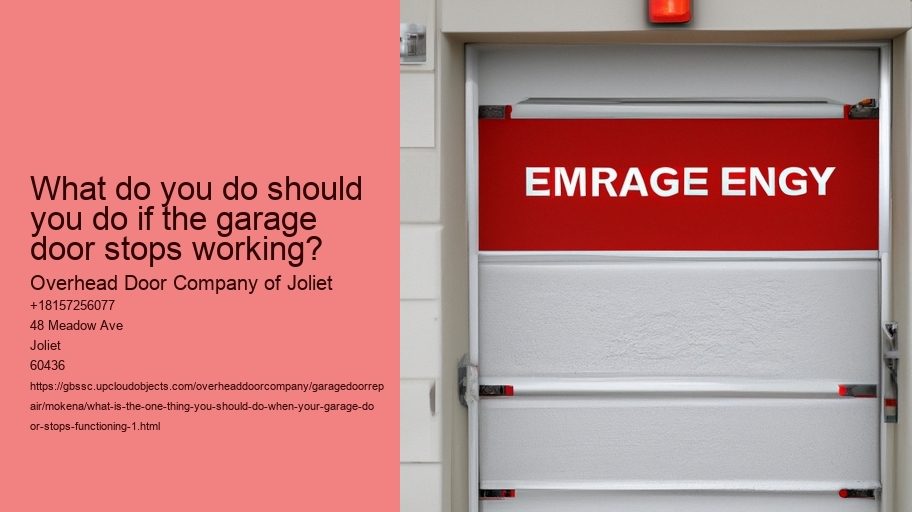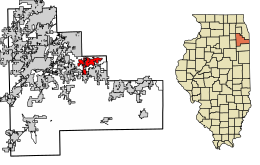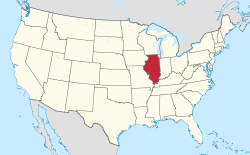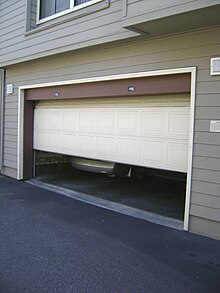Determine the Garage's Type Door and Opener
When garage doors suddenly stop functioning, it's a frustrating and inconvenient experience.Whether you're hurrying to work or trying to drive your car into the garage after a heavy rain, a malfunctioning door is not something you would want to confront with.The first step in addressing this issue is to know the kind of opener and garage door you have, since this will drastically affect your strategy for solving the problem and fixing. What should you do if the garage door stops functioning? .
Garage doors generally fall into a few types based on their appearance and operation.The most frequent varieties are roll-up, sectional and tilt-up doors.Sectional Doors are constructed of panels joined by hinges, which allow the door to bend when it opens and closes on a vertical track.Roll-up doors, commonly found in commercial environments, are constructed from the slats which roll into coils.
Tilt-up doors, on the contrary are a single piece of furniture that tilts in and up when it opens.It is equally important to identify the type of garage door opener.The three primary types are chain-drive, belt-drive, and screw-drive openers.Chain-drive openers, which use a metal chain to lift and lower the door, are strong and affordable but they are noisy.Belt-drive openers function similarly, however they use a belt made of rubber which is quieter, and an ideal choice for attached garages.Screw-drive openers open and close the door by means of a threaded steel rod, offering a balance between costs and noise.
The next step is to examine your garage door opener, and determine the model. Verify the breaker and plug to confirm that the opener is powered. Inspect the manual release cable and make sure that it hasn't been pulled. This could cause the door to become disconnected from the opener. Check the rollers and tracks of the door for any damage or obstructions, and then remove any debris.
Lubricate moving components if needed because a lack of lubrication can result in jamming, sticking or even squeezing. Resetting the opener will fix any electronic malfunctions. Read the manual of the model you are using to learn the exact instructions. Some openers can be reset by pressing the button, whereas others require that the unit not be plugged in and then re-plugged.
What is the One Thing You Should Do When Your Garage Door Stops Functioning? - Cook County
- Ashburn
- HomeAdvisor
- Cairo
The tension of springs is very high, and can cause danger to repair them without the right tools.
In conclusion, when your garage door suddenly stops working then it is
Examine for obstructions and debris
When the garage door abruptly ceases working, it can be confusing and frustrating particularly if it's part of your routine.
One of the first and most efficient steps you can consider when you are faced with this situation is to look for any obstructions or debris.This simple yet effective action can often be the key to identifying the problem and restoring the functionality of your garage door.Even a minor obstruction could cause a problem for your garage door to stop working properly.
Begin by taking a close look at the tracks that run along the opposite side of the door.Look for obvious obstructions or buildup of debris.If you find anything that is unusual, such as a twig or a stone stuck in the track, be sure to remove it.
Sometimes, the issue may not be immediately visible So, it's recommended to run your hand through the track and feel for any unnoticed obstacles.Ensure that the tracks are aligned correctly and also, since any misalignment could result in the door becoming jammed.Check the hinges and rollers. They are supposed to be moving without resistance. If they're stuck or sticky, it could be due to corrosion or dirt. Cleaning and lubricating these components will often resolve the issue.
Examine the area around the door. Sometimes items within the garage might drop or move, making it difficult for the door to move. Be sure that there are no obstructions and no obstructions that might block the door.
If, after clearing all visible obstructions, the door is still not working take a look at the sensors.
The sensors on modern garage doors could malfunction when they're dirty, or if they are not aligned correctly.By ensuring a clear path and by avoiding obstructions, you'll save yourself the hassle of calling a professional to resolve a problem that's typically straightforward.
Verify the wall switch as well as the remote control
It is important to verify the wall switch and remote control.
The inspection of these components can help you to save time and avoid costly errors.First, consider the remote control.This handheld device is your primary tool for operating the garage door without direct physical interaction.Over time, remote controls can experience issues such as drained batteries, signal interference, or even internal damage.Start by replacing the batteries with new ones.It might seem simple, but dead batteries are a common reason for a garage door not responding.If the problem persists after replacing the batteries, try reprogramming the remote according to the manufacturer's instructions.Additionally, ensure that the remote is within the recommended range and that there are no obstructions blocking the signal.
The wall switch is an important component of the garage door's security system.
The wall switch is directly connected to the garage door opener and typically provides a more reliable way of operation.Inspect the switch for any indications of physical damage or wear.Sometimes, loose wires or faulty connections can make the switch malfunction.If you feel confident doing it, then carefully remove the switch's panel and check for any disconnected or damaged wires.If you find any problems, it may be necessary to call an expert electrician to solve the issue.In some cases, both the remote control and the wall switch may be working however the door is unresponsive.This could be a sign of a problem in the garage door opener itself or other components such as sensors or door tracks.However, starting by utilizing the wall switch and remote control is the logical first step.
It helps you eliminate these common problems before you move on to more intricate troubleshooting techniques.This initial inspection can reduce time and give you peace of mind that you've taken the proper steps to diagnose your problem.
Check the door's balance manually
If your garage door suddenly stops functioning it could be painful and inconvenient.The garage door is an an integral part of your home, providing security, shielding from elements, and a simple access to your car and storage area.
Conducting a manual test of the balance of the garage door could be the most important thing to do in the event that your door is not functioning properly. This easy but efficient technique will allow you to identify any potential problems and prevent any damage from occurring.The balance of a garage door is critical to its proper functioning.A balanced door will ensure that the door opener doesn't need to work harder than it has to, reducing the chance of wear and tear on the motor and other parts.An uneven door, contrary to what you might think could cause more severe issues over time like misalignment, broken springs or a complete system failure.Therefore, testing the door balance is an important check that will help you determine whether the problem is with the door or the opener mechanism.
To check the door's balance, first disconnect the garage door opener.
Most garage doors come with a release mechanism which is located on the red cord or the handle. When the door has been disconnected from the motor, raise it up to waist height and release it. A well-balanced door will remain in place, or move in a gradual manner.If you find that the door is not balanced, it is important to fix the problem promptly.Door balance problems are typically related to tension in springs, and can be dangerous to adjust on your own due to the pressure they're under.It is recommended that you get help from a professional to adjust the springs and make sure that the door is well-balanced correctly.Doing this not only fixes the immediate issue but also increases the longevity and durability of the garage door system.
The manual testing of the balance of the garage door is a vital first step to make if it suddenly ceases to function.
If you address issues promptly and comprehending the importance in addressing the issue, you can make sure that your garage door can operate smoothly and safely in the future.Check the tracks and rollers.
This easy check can reduce your expenses and save you time If your garage door not functioning.
The rollers and tracks are the key elements of your garage door's operating system.The tracks comprise the iron rails that control the door's opening and closes, while the rollers are small wheels that move along these tracks.
These parts can wear out, become dirty or misaligned as time passes. This will cause issues with operation.Begin by visually inspecting the tracks for obstructions.Dust and grime even small debris can accumulate within the tracks, which causes the rollers' to be hampered as they move across the path.Cleaning the tracks using a damp sponge can usually solve these issues.Make sure that you dry them thoroughly afterward in order to avoid rust.
The next step is to check the alignment of the track. Tracks must be straight and parallel. If they look bent or are out of alignment, the door might jam. You can push the misaligned track back in place with mallets made of rubber. However, if there is a lot of damage, it's advised to speak with an expert who can realign the tracks correctly.
Rollers can become worn out over time. This is particularly true if they're made of plastic.
Look for indications of wear and tear such as cracks or chips.If the rollers are worn, consider changing them out with brand new ones.Metal rollers that have ball bearings tend to offer greater durability and more smooth operation.Additionally, lubrication also plays a essential role in maintaining the smooth movement of the tracks and rollers.Applying the lubricant with a silicone base can lower friction and stop wear.Make sure that you lubricate the moving parts, such as springs and hinges to ensure that your garage door functions effectively.
In the end, looking at the rollers and tracks is a practical first step when the garage door suddenly ceases working.It's an easy process that will often reveal and fix common issues.By ensuring these components are in good condition, aligned and properly lubricated, you will usually restore your garage door fully functional without having to make costly repairs.
Inspecting and maintaining these components can also assist in preventing any future malfunctions. This will help prolong the lifespan of your garage system.Verify for visible damage, or wear
When a garage door suddenly stops functioning, it can be very frustrating and aggravating, particularly if you are going out or trying to secure your home for the evening.While there could be many reasons behind the issue but one of the most practical and immediate options is to check for any visible damage or wear.This initial examination can uncover the cause of the issue, making for a quick and efficient solution.
Garage doors are complex systems that include springs, rollers cables, tracks, and other components. As time passes, the parts of this system can get worn out from constant use and exposure.
What is the One Thing You Should Do When Your Garage Door Stops Functioning? - all rights reserved
- rust
- The Home Depot
- household
Begin by checking the springs, which are crucial for lifting and lowering of the door.Look for any indications of breakage, rust, or misalignment.A damaged or worn-out spring could render the door unusable, and it is essential to resolve this problem promptly.Next, move on to the cables and look whether there are broken or frayed strings that could hinder the door's movement.Similarly, inspect the tracks and rollers for any damage, dents or obstructions that might be obstructing the path of the door.
Another thing to look at is the door itself.Look for visible dents, bends, or warpings that could impact its balance and alignment.Pay particular attention to the weather stripping on the bottom of the door, since a damaged strip could stop the door from sealing properly.
Verify that the sensors mounted at the door are cleaned and in good alignment. Uneven or dirty alignment could cause the sensors to fail and stop functioning.While a visual inspection can provide valuable insights however, it is important to consider that some problems might not be immediately apparent.If you are unable to find any obvious signs of wear or damage, it may be necessary to consult a professional technician to identify and fix the problem.However, by conducting an initial inspection, you can often detect and fix minor issues prior to them escalating into significant and costly repairs.
This approach will not only help you identify the problem more quickly, but it will help you take steps to restore the functionality of your garage door.
You can extend the lifespan of your garage door simply by taking proactive steps.Review the Springs and Cables
It can be frustrating when your garage door ceases working. You must check the springs and the cables. These parts are essential to the operation of your garage, and are the main culprits of a garage door that is not functioning properly.
The springs play an essential role in the performance and the smoothness of your garage, by neutralizing the load. There are two major types of springs: torsion and extension. Torsion springs are placed above the garage, and they twist to conserve energy. Extension springs on the other hand are installed at either end of the door and can stretch to create the force needed.
These springs can get worn out, break or lose tension causing operational problems. The cables could also be damaged through wear and tear.
What is the One Thing You Should Do When Your Garage Door Stops Functioning? - Comcast
- Cook County
- Comcast
- all rights reserved
If you are evaluating the springs or cables, start by visually looking at them.Look for indications of wear, rust or fraying.If you find a damaged spring or cable it is essential to stay clear of opening the door until the problem is solved, since pushing it could cause more injury or result in an accident.If the springs appear intact but the door is not functioning, it might be due to them losing tension and require adjustment.
Security is a must while working with garage door parts.
The cables and springs are in pressure and could result in serious injuries should they be mishandled.If you're not experienced in garage repair, it's best to contact a professional technician.They are equipped with the right equipment and know-how to repair or replace these parts, ensuring the garage door runs properly and safely.In conclusion, when your garage door suddenly stops working, assessing the springs and cables is a key step in diagnosing the problem.Understanding their role and potential issues can help you determine whether a simple adjustment is needed or if professional intervention is required.Taking prompt action not only restores functionality but also ensures the safety and longevity of your garage door system.
You might want to consider calling a professional technician
When your garage door suddenly stops functioning and it is not working, it could disrupt your day and even pose a security risk to your home.
It may be tempting to grab an instrument box to attempt a fix yourself however it is better to speak with a professional. This decision is not just about your security, but also give you a long-lasting and more efficient solution.Garage doors are complex systems composed of various components such as springs, cables, tracks, and electronic parts.Each of these elements plays a crucial role in the door's operation, and a malfunction in any part can cause the entire system to fail.Without proper knowledge and experience, attempting to fix these issues can be dangerous.For instance, garage door springs are under high tension and can cause severe injury if handled improperly.Professional technicians are trained to deal with these risks safely, using the right tools and techniques to handle repairs.
Furthermore, a skilled technician brings expertise and experience that a layperson does not possess.
They can quickly diagnose the issue and identify whether it's a minor problem, like a misaligned track, or something more serious, like a broken spring.This expertise not only saves you time but also prevents the potential for further damage that can occur with incorrect handling.Professionals also have access to high-quality parts and can ensure that replacements match the specifications of your existing garage door system, leading to better functionality and longevity.A skilled technician can be economical in the long run. While an DIY option may appear less expensive initially, it can result in extensive and expensive repairs later.
Many technicians also provide warranties on their work which gives you peace of knowing that in the event of something going wrong, you're covered.Calling a professional will save you time and money. If you are trying to learn the workings of garage doors, purchase the appropriate tools and complete repairs can take some time or even days. A technician can resolve the issue swiftly and let you return to your regular routine.
In the end, although the urge to fix the garage door yourself could be powerful, contacting a professional technician is the most secure effective, efficient, and ultimately, the most sensible option.Their expertise, access to quality parts, and their ability to complete quick and precise repairs will ensure that your garage door is back and running at a high level to protect your home and your valuables.


















